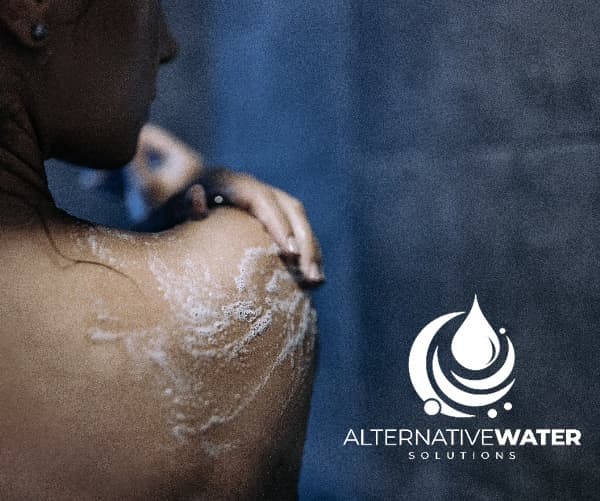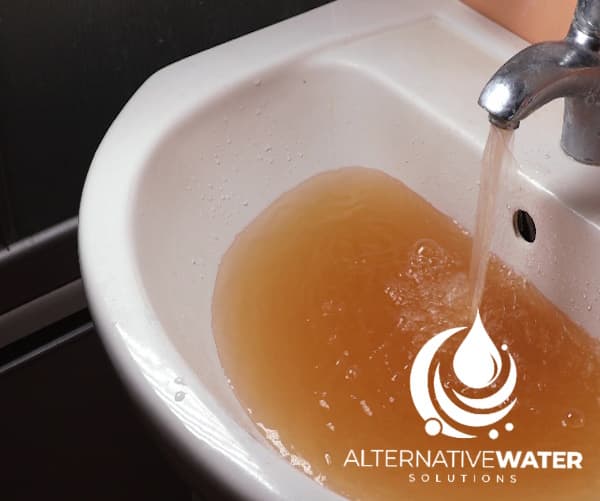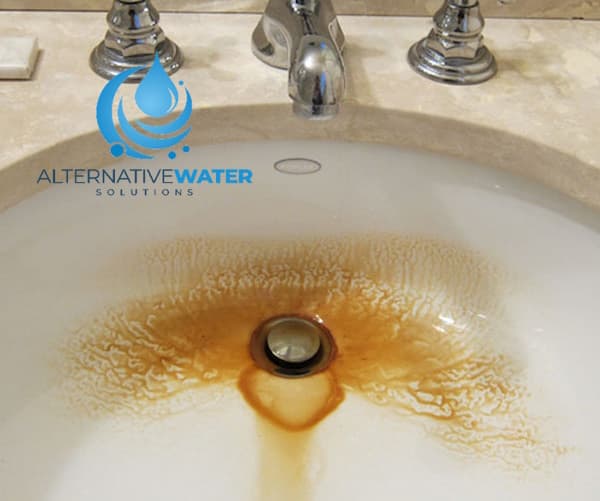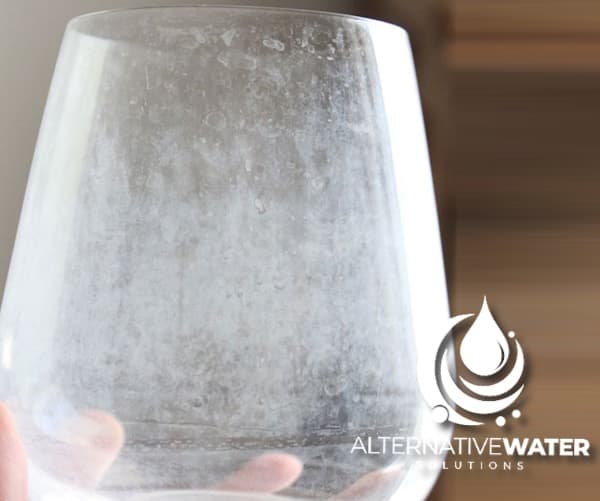Water Troubleshooter
What Seems To Be The Issue?
placeholder
Unpleasant Taste?
 Unpleasant taste in your water can manifest in various ways, such as a bitter or metallic flavor, an odd and unidentifiable taste, or even a chemical or pool-like aftertaste. These indicators may be indicative of underlying issues that require attention and resolution.
Unpleasant taste in your water can manifest in various ways, such as a bitter or metallic flavor, an odd and unidentifiable taste, or even a chemical or pool-like aftertaste. These indicators may be indicative of underlying issues that require attention and resolution.
We Recommend…
If the root cause of the problem is bacterial contamination, we recommend implementing an Ultra Violet (UV) light treatment in conjunction with an additional filtration system.
On the other hand, if the issue is attributed to excessive chlorine levels, we suggest installing a carbon filter to address and neutralize the chlorine presence effectively.
When volatile organic chemicals (VOCs) are responsible for the unpleasant taste, we can explore several filtration options tailored to your specific needs. Commonly used solutions include carbon filters, air filters, sand filters, and various other filtration techniques. To address VOCs effectively, we will assess the specific types of chemicals involved and create a customized water treatment plan tailored to your unique situation.
Limited Lather In The Shower or Sink?

If you’ve ever experienced a frustrating situation where you’re trying to wash dishes, your hands, or even your hair, and you notice that the soap just doesn’t seem to produce the lather you’d expect – you’re not alone. This issue, characterized by the inability of soap to create a satisfactory amount of suds despite your best efforts, often arises due to a common culprit: hard water.
Hard water contains elevated levels of minerals, primarily calcium and magnesium. When these minerals are present in your water supply, they have a peculiar effect on soap. They interfere with the soap’s ability to generate the typical bubbly lather that aids in cleaning. Essentially, hard water hinders soap from performing its cleansing duties to the fullest extent.
To make matters even more challenging, high concentrations of iron and manganese in your water can exacerbate the hardness problem. These additional minerals intensify the adverse impact of hard water on soap, making it even harder to achieve the desired lather.
We Recommend…
To address all of these issues and restore your ability to create proper suds while washing, the recommended solution is typically installing a water softening system to distribute softer water throughout your home, or a salt-free conditioner like SSoft Redox. These solutions work to reduce the levels of calcium, magnesium, iron, and manganese in your water, effectively softening it and allowing soap to function as intended, giving you the satisfying lather you’ve been missing.
Rotten Egg Smell?

Rarely, you may encounter is a foul odor filling the room when you turn on your tap water. This unpleasant odor can be smelled whether you’re using cold or hot water! This malodorous dilemma typically arises due to two main culprits: high levels of sulfur bacteria in the local water supply, often characterized by the presence of hydrogen sulfide gas or elevated concentrations of iron bacteria. When you notice the distinct “rotten egg” smell in your cold water, the problem tends to be more pronounced.
We Recommend…
To address this challenge effectively, a multi-pronged approach is necessary. First and foremost, the removal of iron and manganese from your home’s water will be crucial, as these minerals are contributing to the foul odor. Additionally, it’s essential to neutralize the hydrogen sulfide gas produced by the sulfur bacteria.
In addition, we would always say that you are going to improve your home’s water quality by addressing issues like hardness and treating or eliminating the bacteria that is causing the problem. Then you will try have an effective odor removal solution!
The most efficient treatment option typically involves installing an iron manganese filter. In some cases, specialty filters may be required. For milder odor issues, the use of a Redox filter, such as SSoft Redox, can be an effective and practical solution to alleviate the problem.
Rust-Coloured Water?
 If you turn on your tap and notice that the water appears rusty or murky, it’s a clear sign of the presence of iron, which can exist in one of three forms. Identifying the type of iron in your water is essential for effective treatment. There might be organic iron present, or oxidized iron, often called rust. Removing each of these 2 types of iron requires different solutions. Finally, if your water runs clear initially but then turns rusty over time when exposed to air, this suggests the presence of dissolved iron.
If you turn on your tap and notice that the water appears rusty or murky, it’s a clear sign of the presence of iron, which can exist in one of three forms. Identifying the type of iron in your water is essential for effective treatment. There might be organic iron present, or oxidized iron, often called rust. Removing each of these 2 types of iron requires different solutions. Finally, if your water runs clear initially but then turns rusty over time when exposed to air, this suggests the presence of dissolved iron.
We Recommend…
A water softener can effectively remove dissolved iron, but it’s not very efficient at eliminating oxidized iron and is entirely ineffective against organic iron. For oxidized iron or dissolved iron, the best treatment option is an AiO Air’N’Sand filter. At lower iron levels, we might recommend a SSoft Redox system or other specialty filters.
When dealing with organic iron, we would have you consider several options: A backwashing carbon filter or a carbon block filter can somewhat effectively remove this but often, a salt-based colour removal unit is more efficient. Specialty filters tailored to specific organic compounds are also available today, and in some cases, the AiO Air’N’Sand filter with Filox can effectively address organic iron.
Across the Okanagan Valley, there are times when your home’s water may become murky due to our snowpack runoff in the spring. During this period, solutions include installing a sediment filter and a carbon filter in a Big Blue unit, or install a salt-based colour conditioner or a backwashing carbon filter for more significant issues.
Rust or Green Coloured Stains?

Rust stains are those reddish-brown marks you often find on surfaces where water comes into contact, such as the sides of your tub or sink, within your appliances, or even on the exterior walls of your house caused by an outdoor tap. As mentioned above, these unsightly stains may be the evidence of elevated levels of iron or manganese in your water supply.
If you notice green or blue staining, this indicates the presence of copper in your water. Such staining is a sign of potentially acidic water, which may be coming from corroded copper pipes or brass fittings. In some cases, your home’s water supply may contain copper, which should be removed for health and safety reasons.
We Recommend…
To counteract any acidity, a water treatment solution recommended by Alternative Water Solutions is to add calcite in a cartridge within a Big Blue system. For copper removal, a more specialized solution like Reverse Osmosis may be necessary.
White Residue on Glass?

The presence of white residue may appear as a thin film on your shower door or on your clean dishes, leaving them with a milky appearance. As well, you might encounter a more stubborn and scaly white buildup inside appliances like your coffee pot, kettle, or on the element at the bottom of your dishwasher. The root cause of this issue is often hard water! When hard water minerals, primarily calcium and magnesium, are present in your water supply, they tend to leave behind these unsightly residues as they settle on surfaces over time.
We Recommend…
To effectively tackle this problem, we recommend utilizing a salt-free conditioner like SSoft Redox. This type of conditioner is capable of addressing the hardness issue by preventing the buildup of calcium and magnesium deposits. Furthermore, for dealing with alkalinity spotting, you can opt for a special alkalinity softener in combination with a salt-free conditioner. This comprehensive approach ensures that both the hardness and alkalinity-related residues are effectively managed, leaving your surfaces and appliances free from the milky white buildup.
